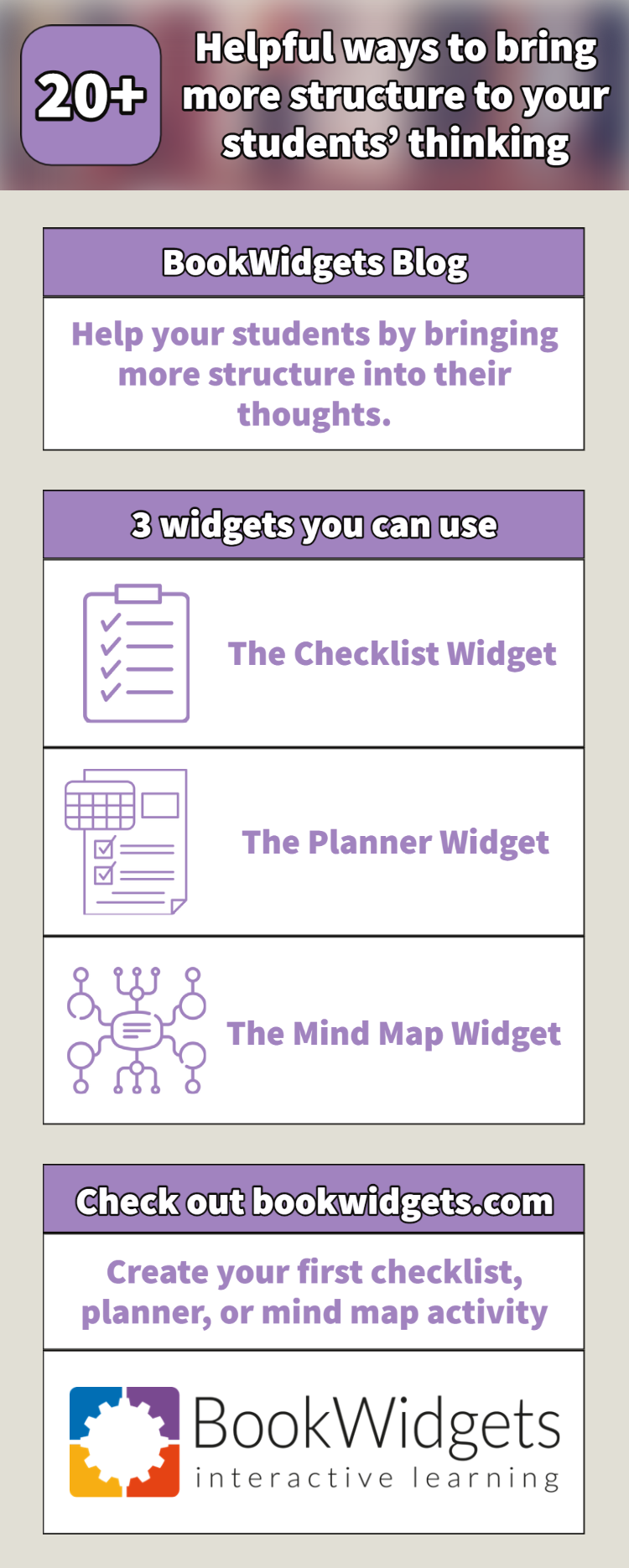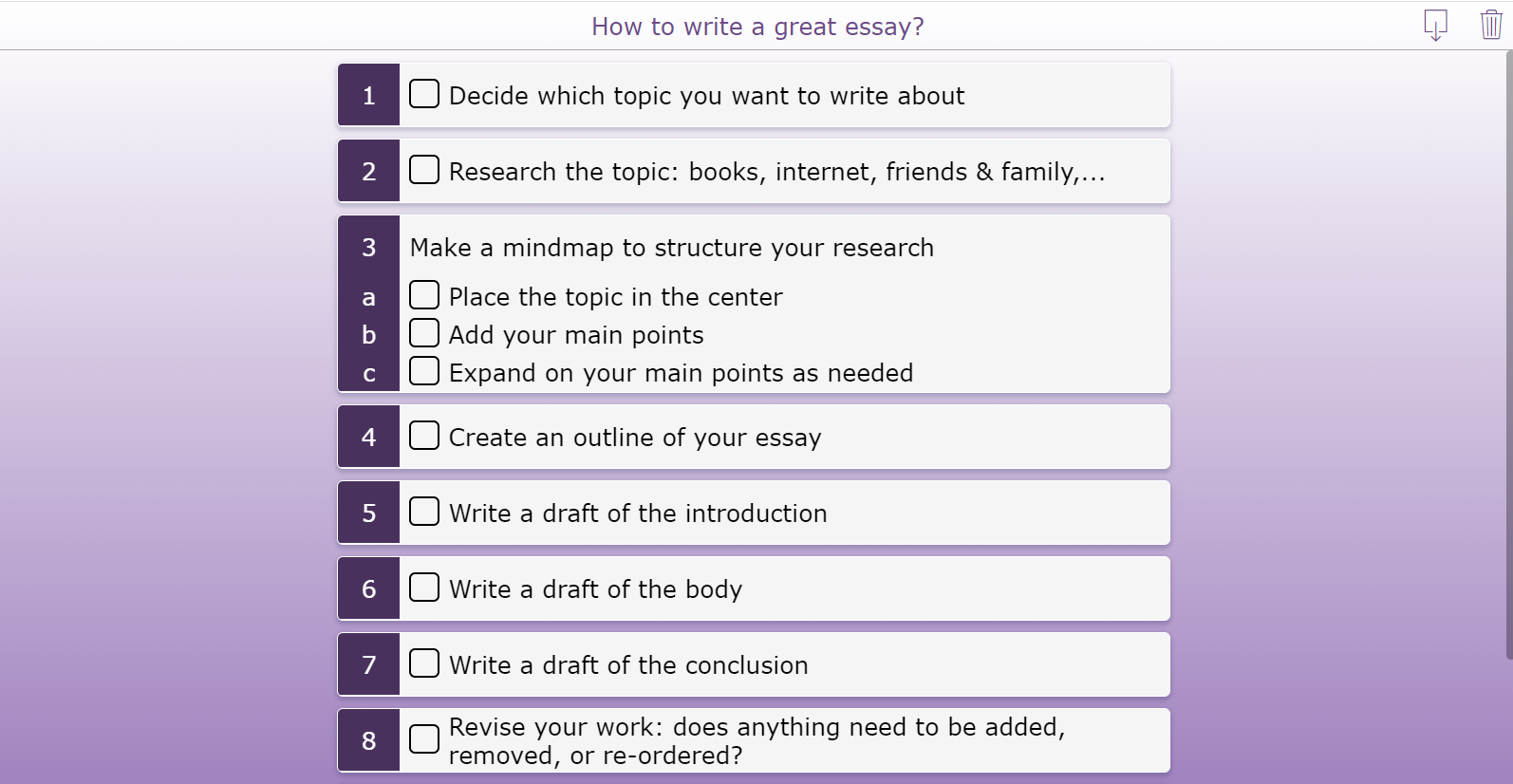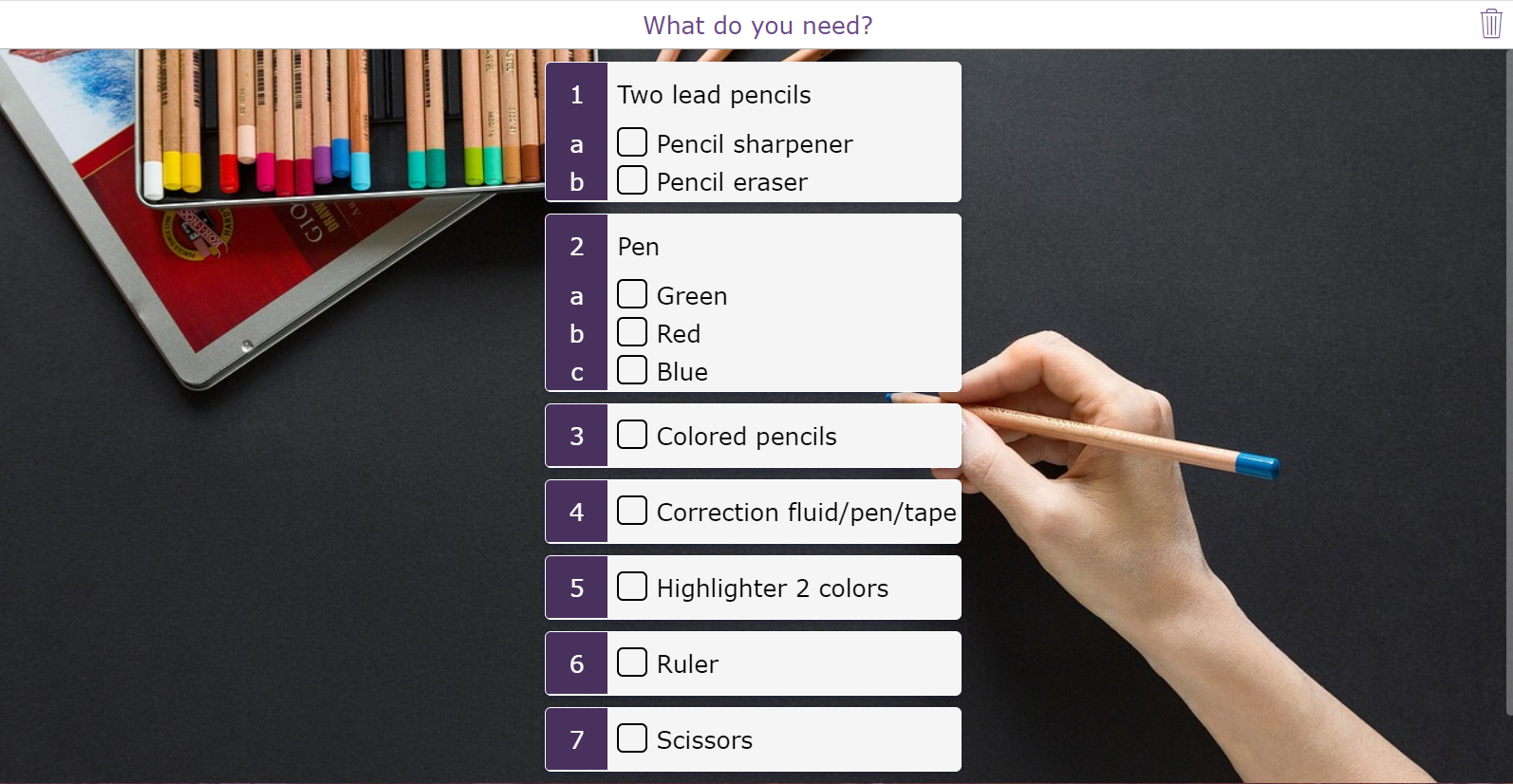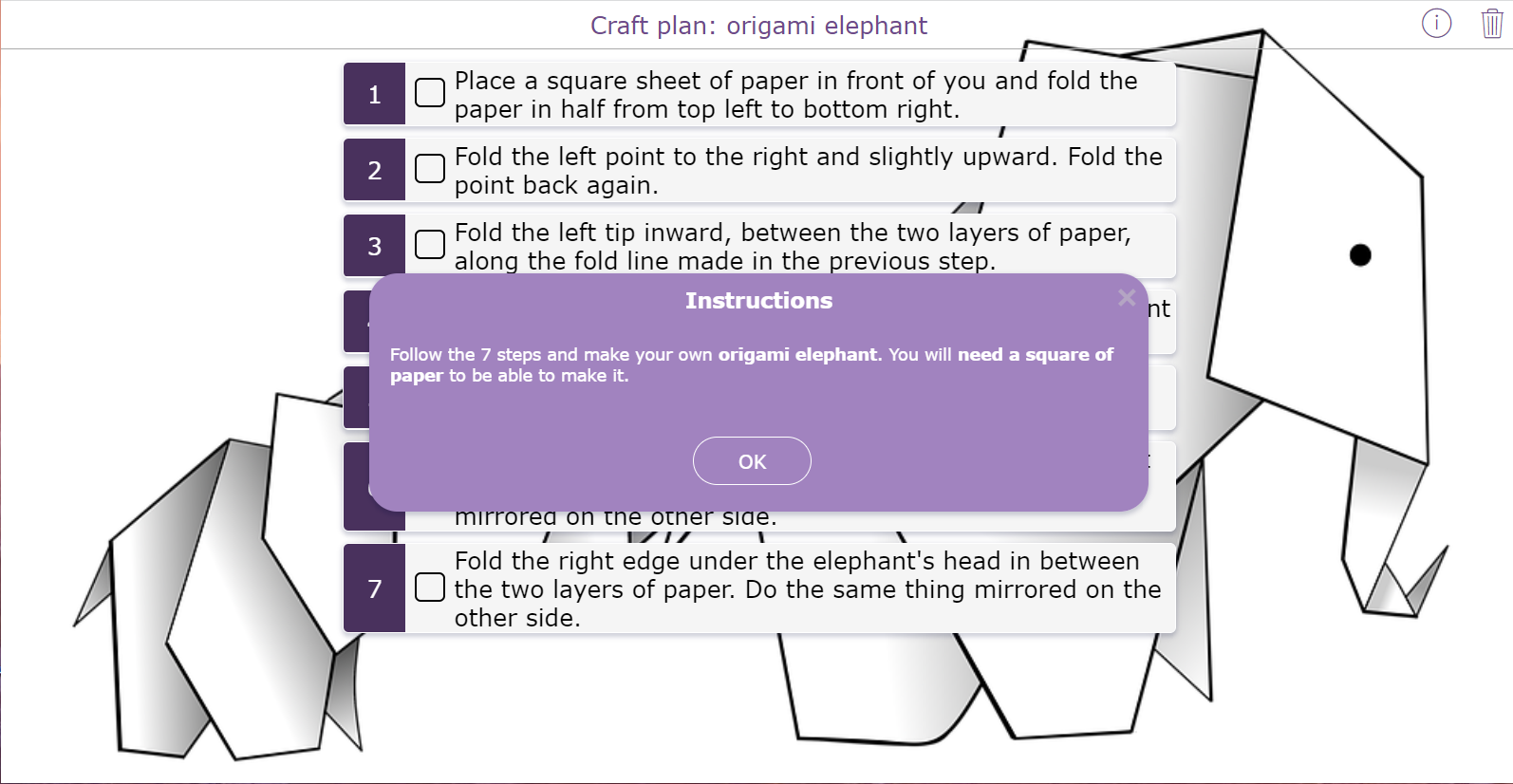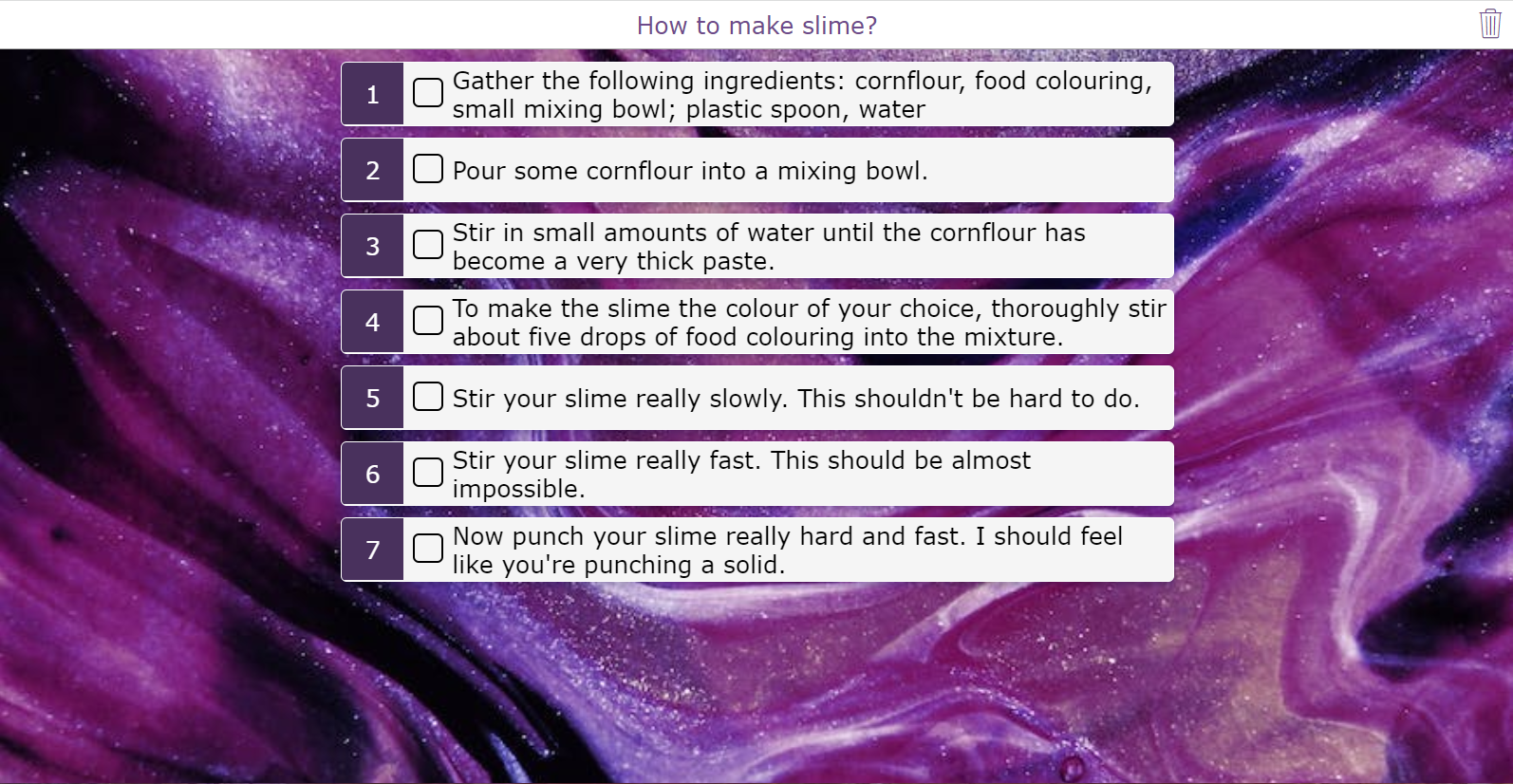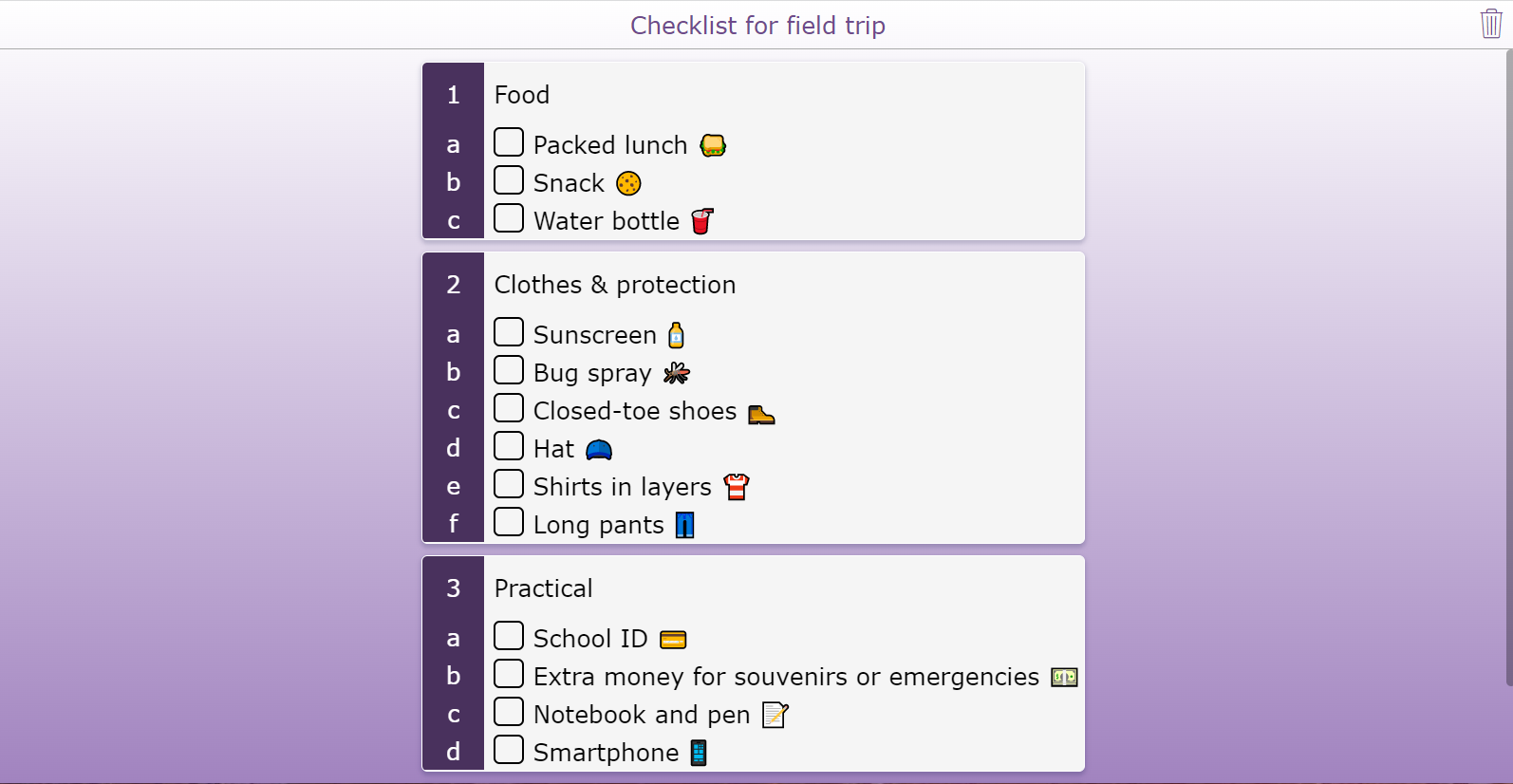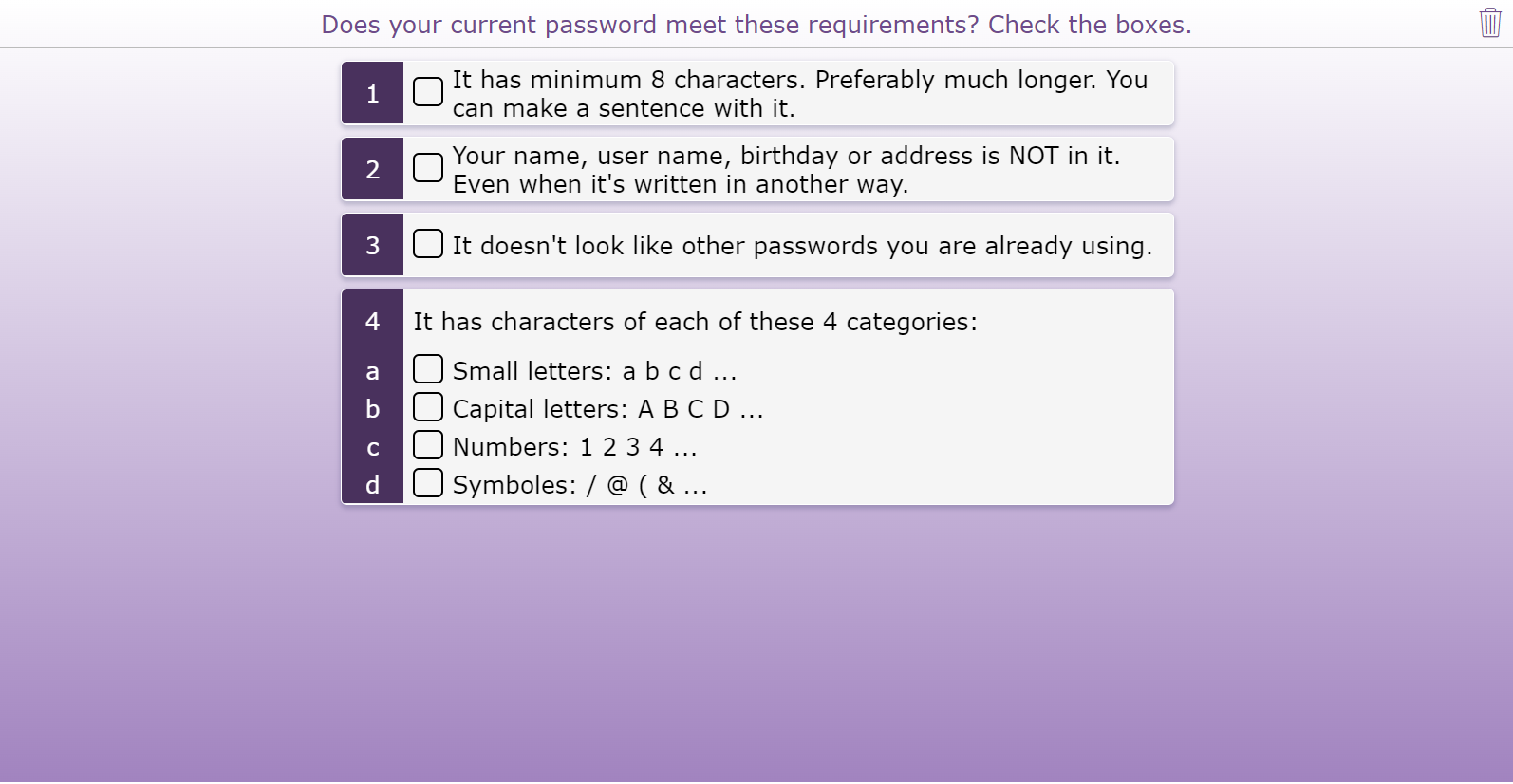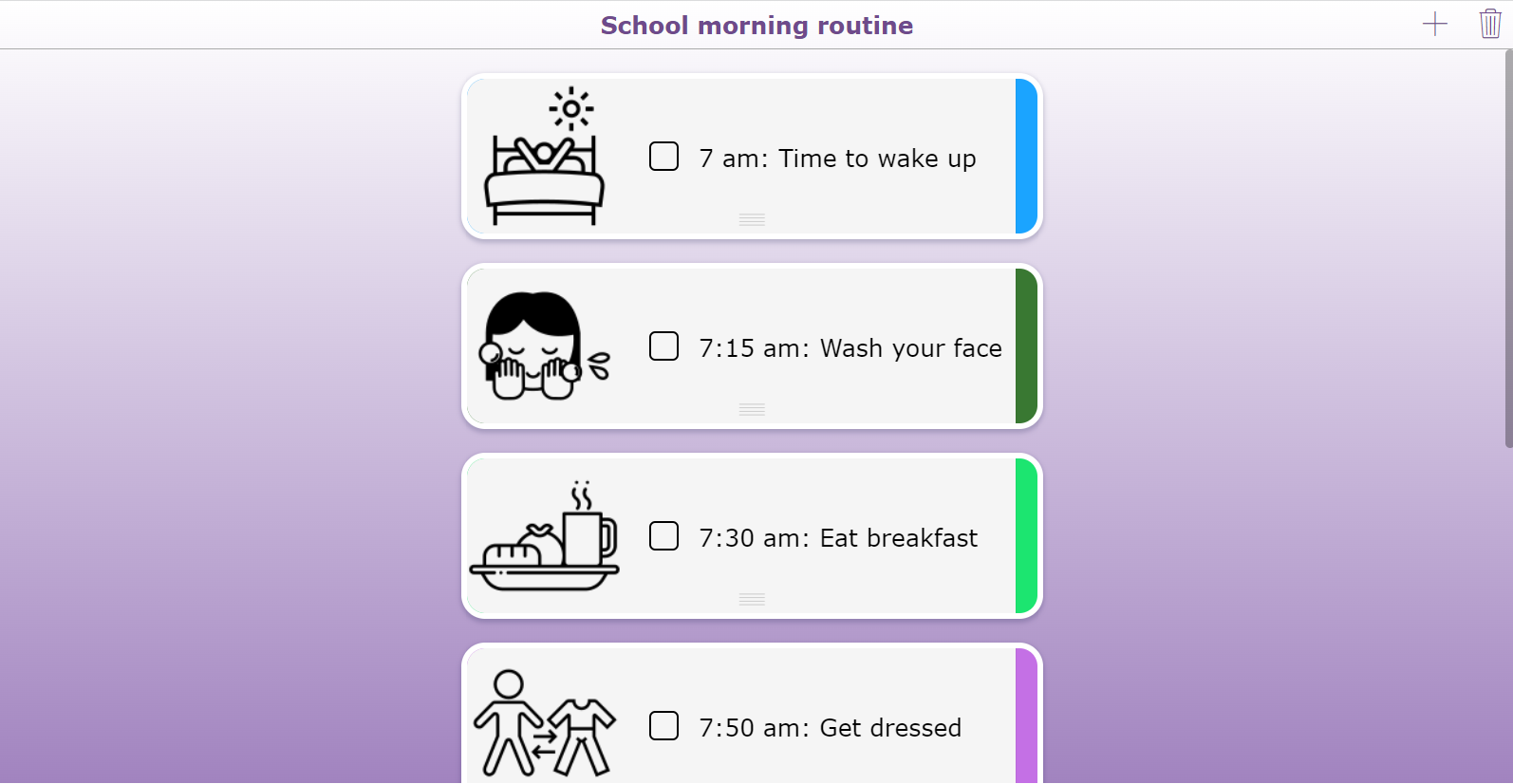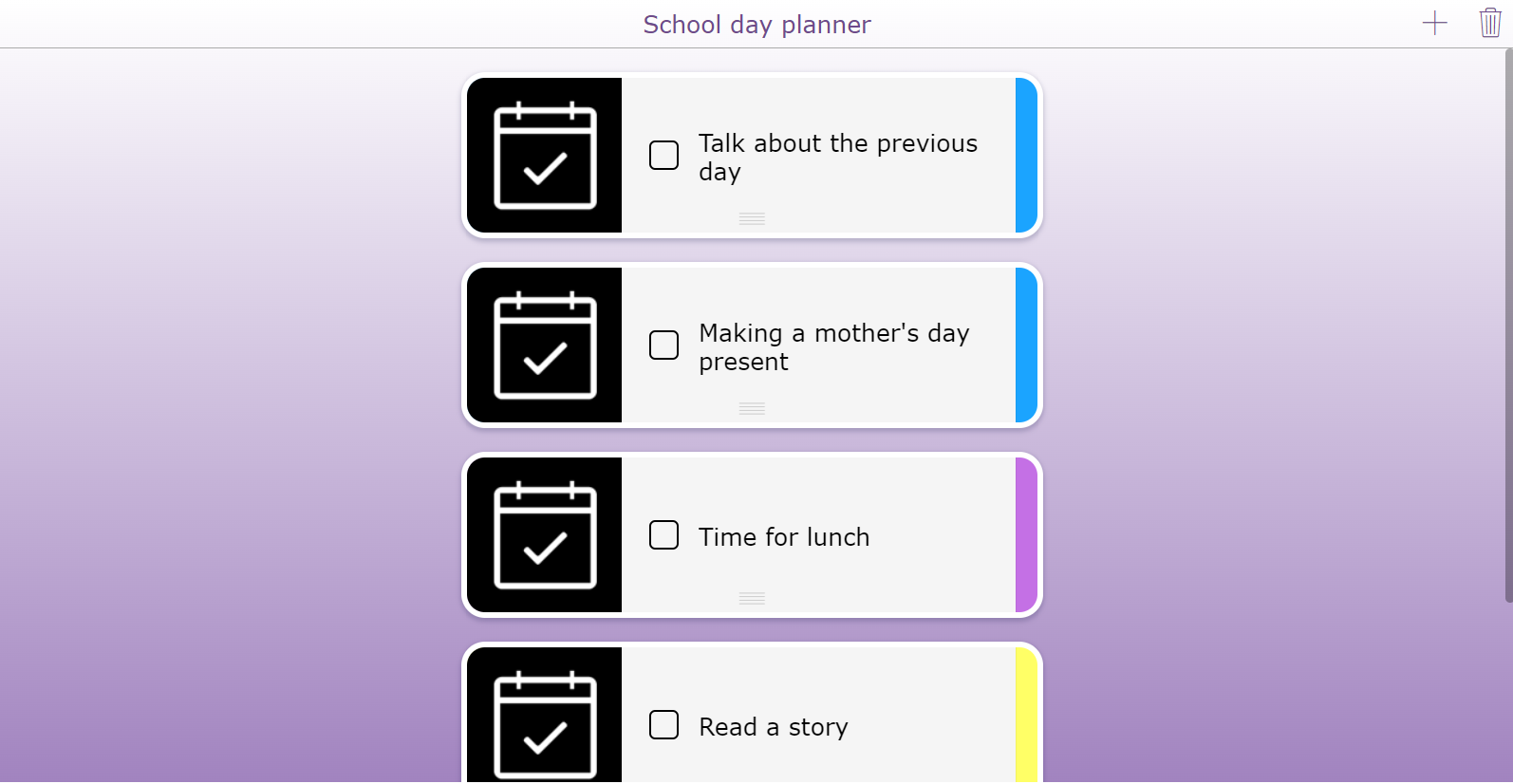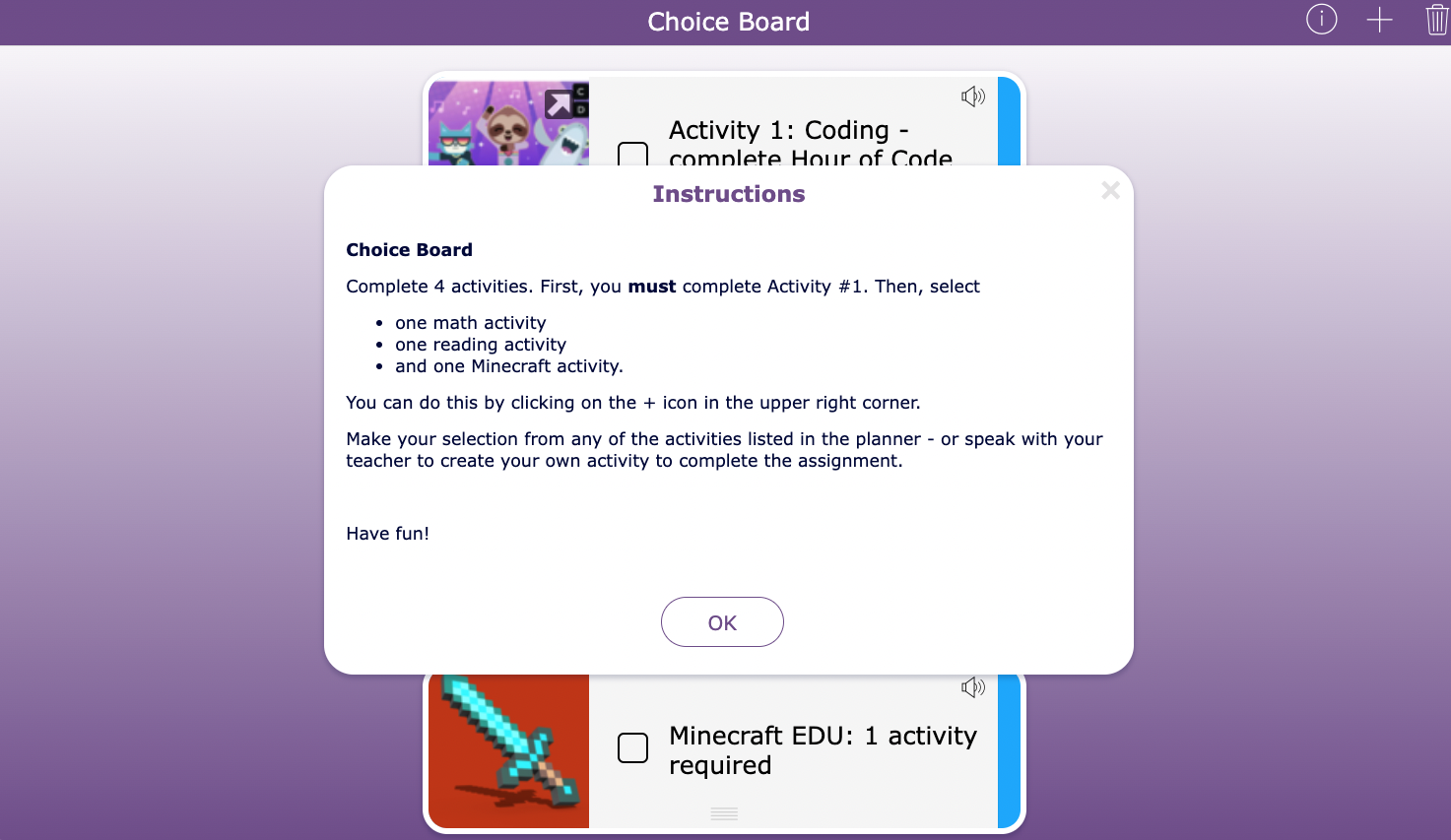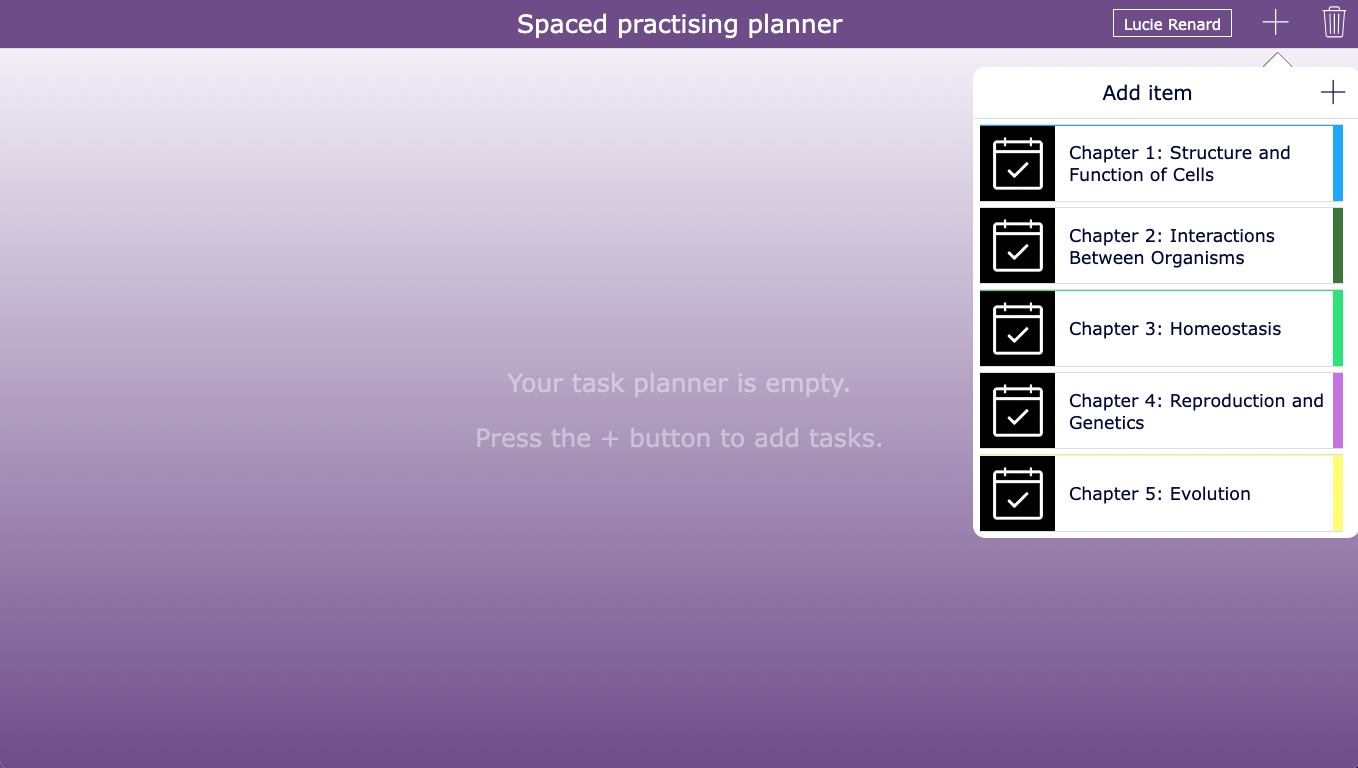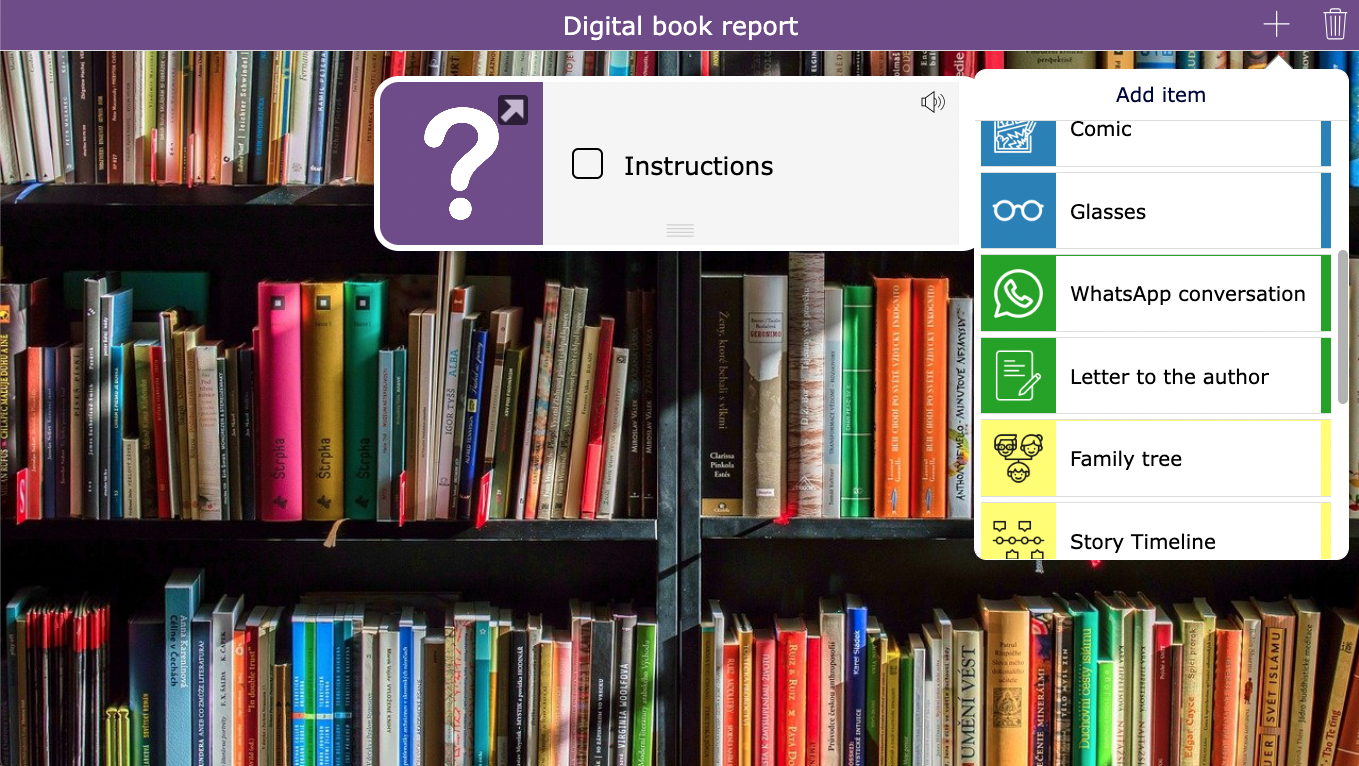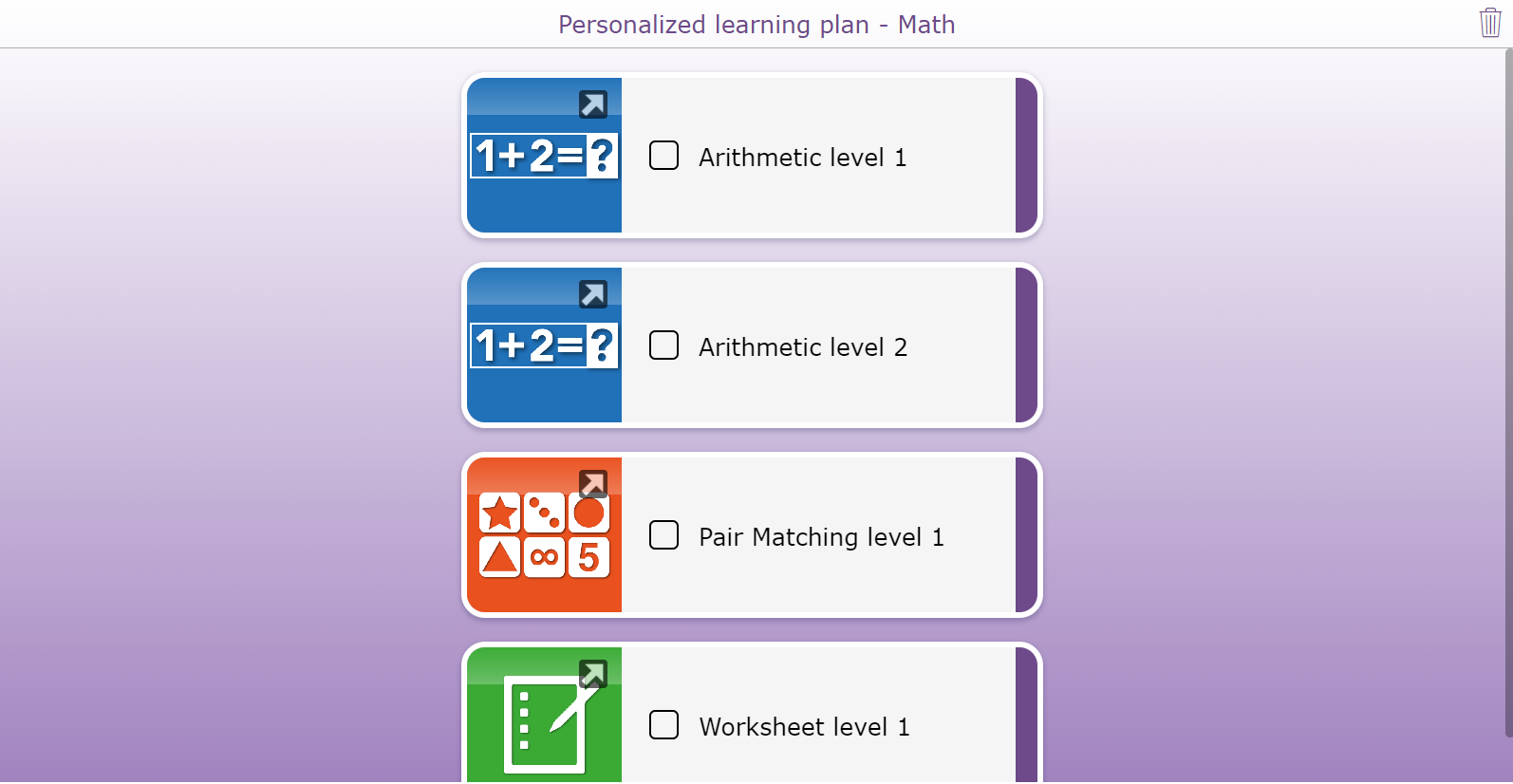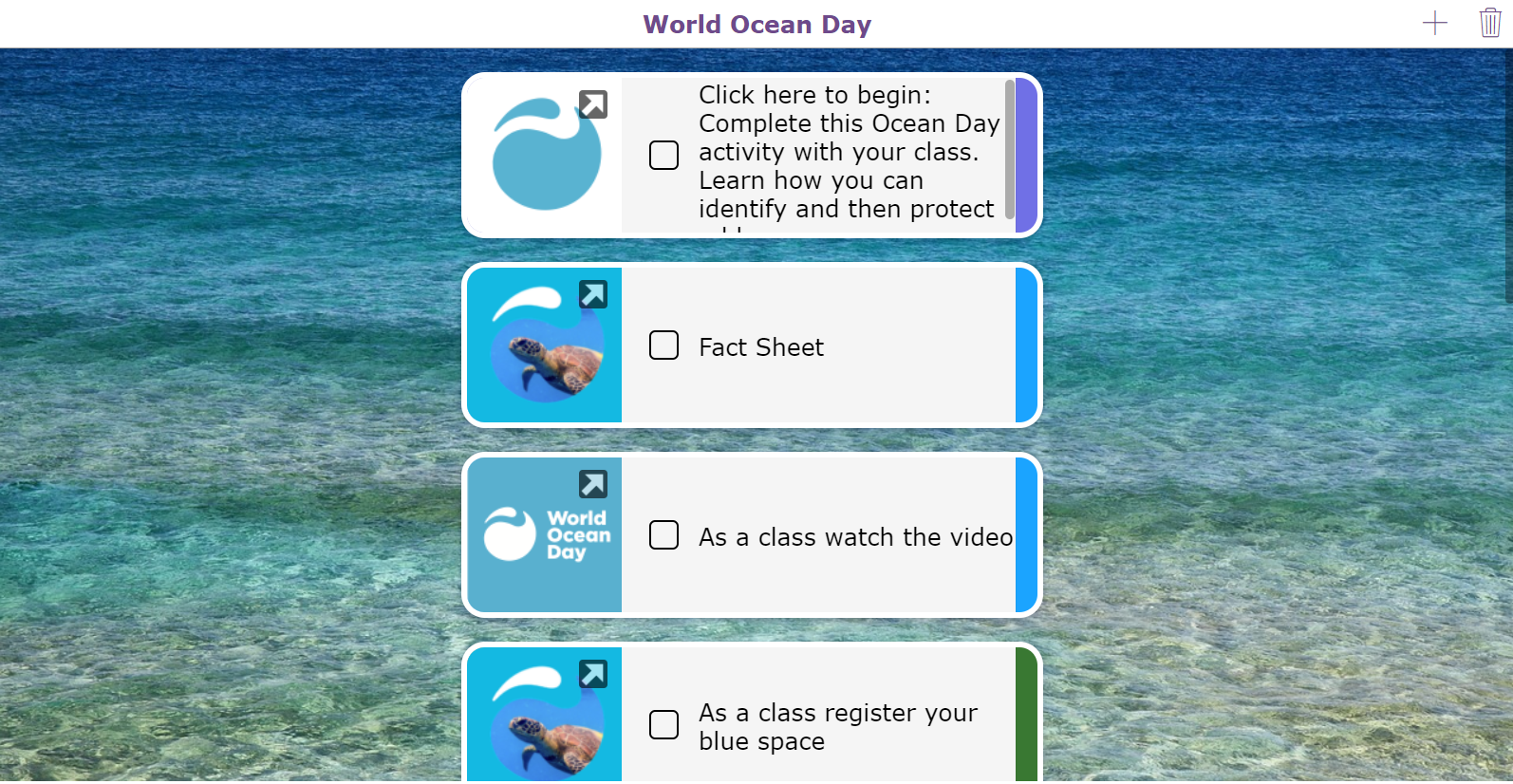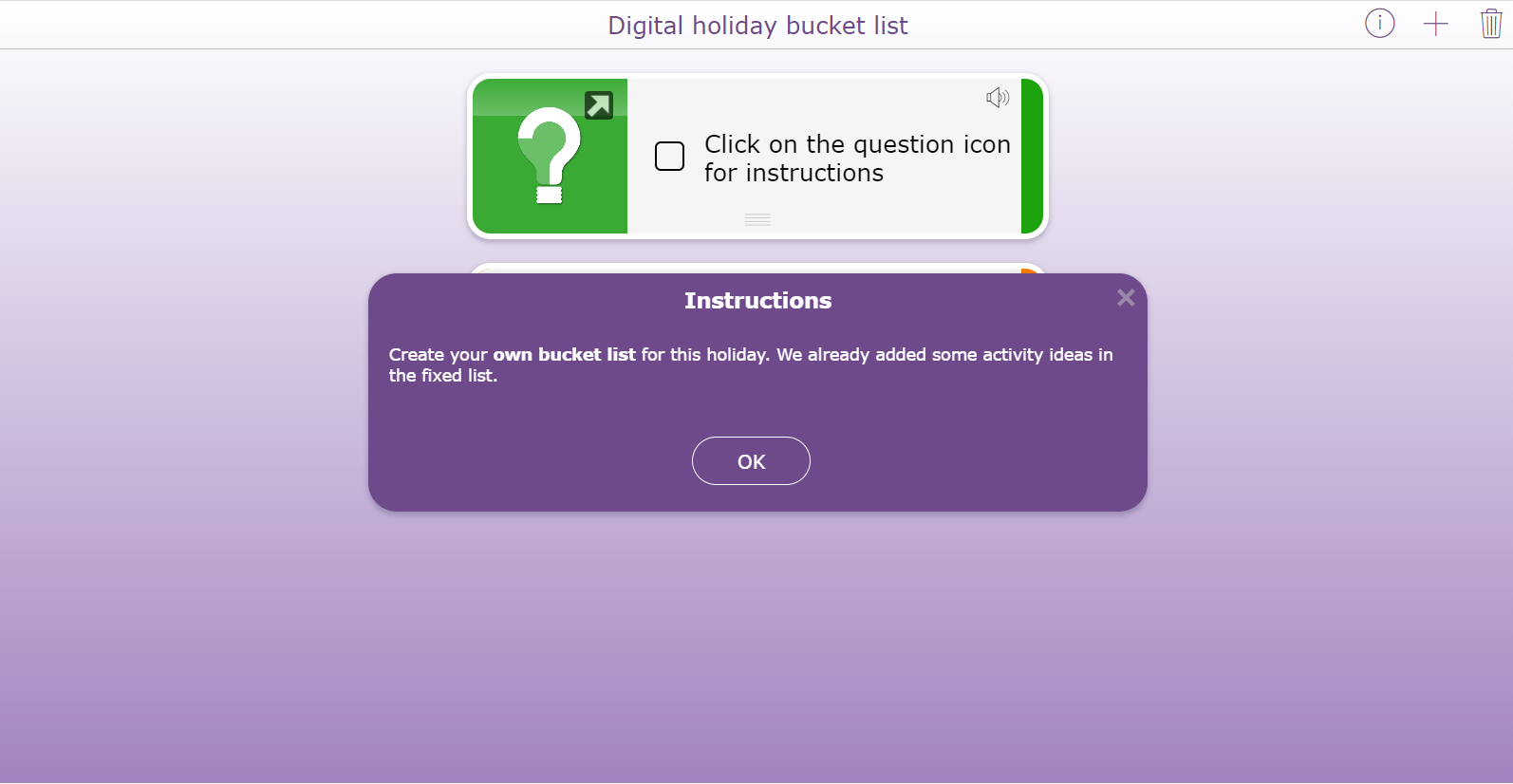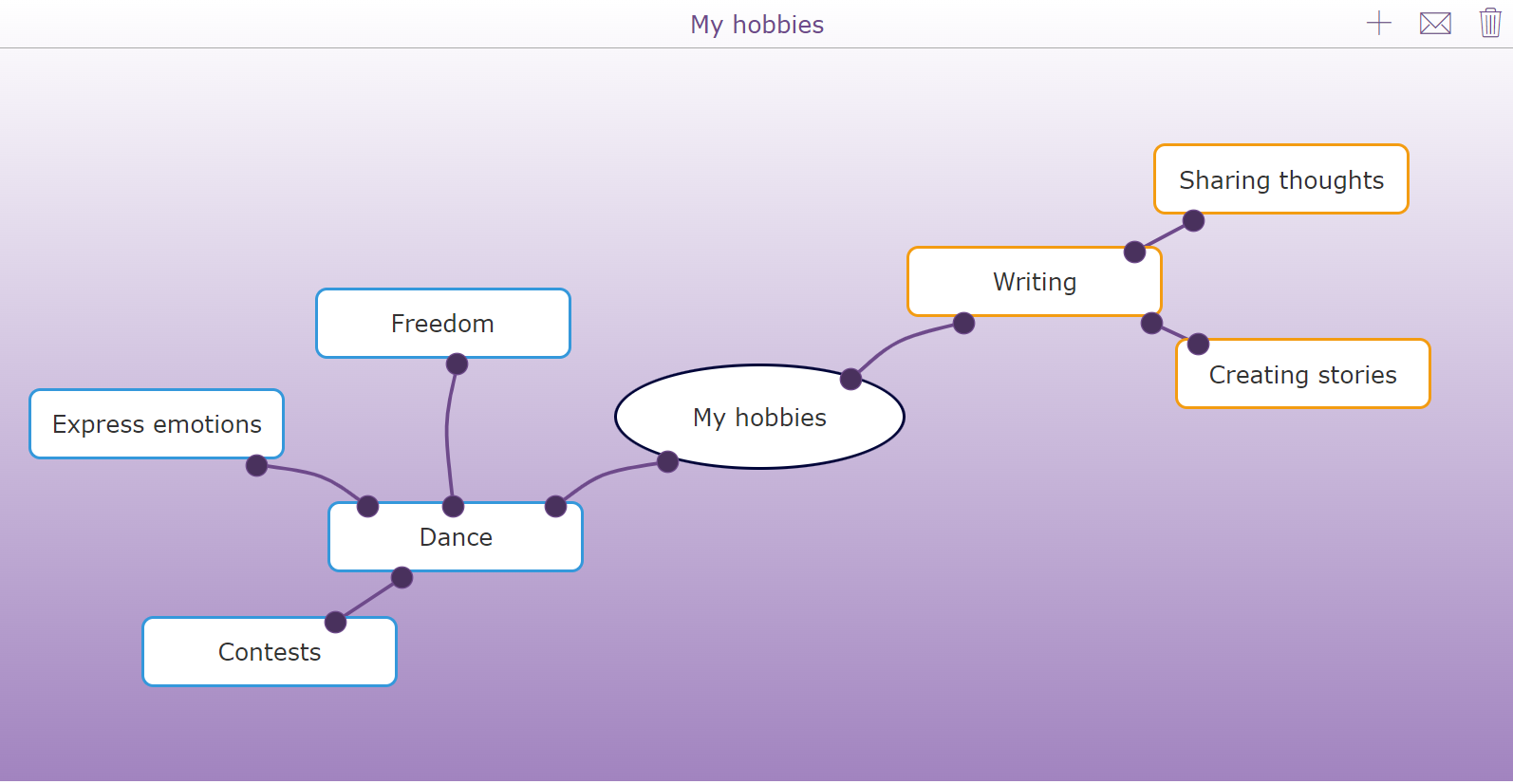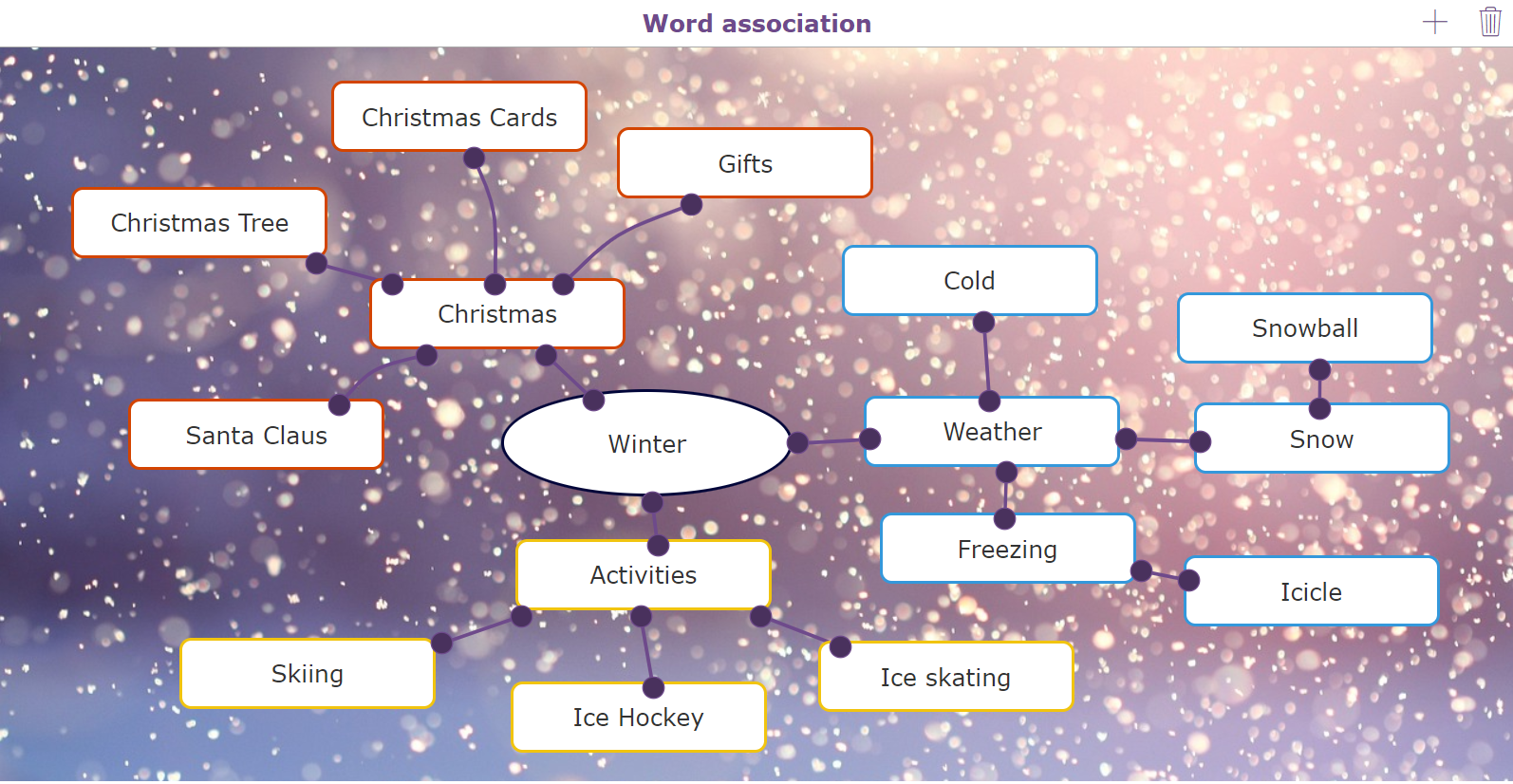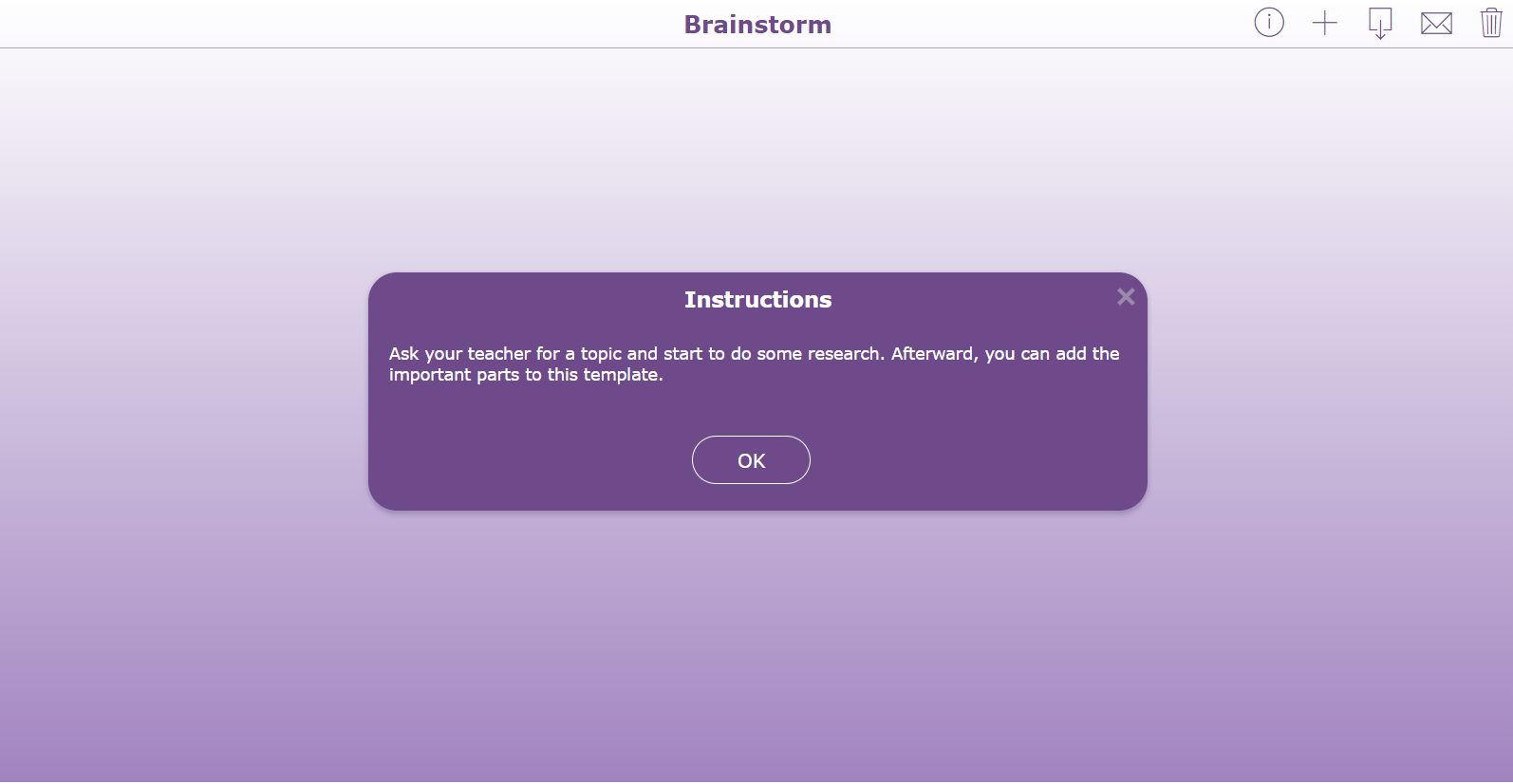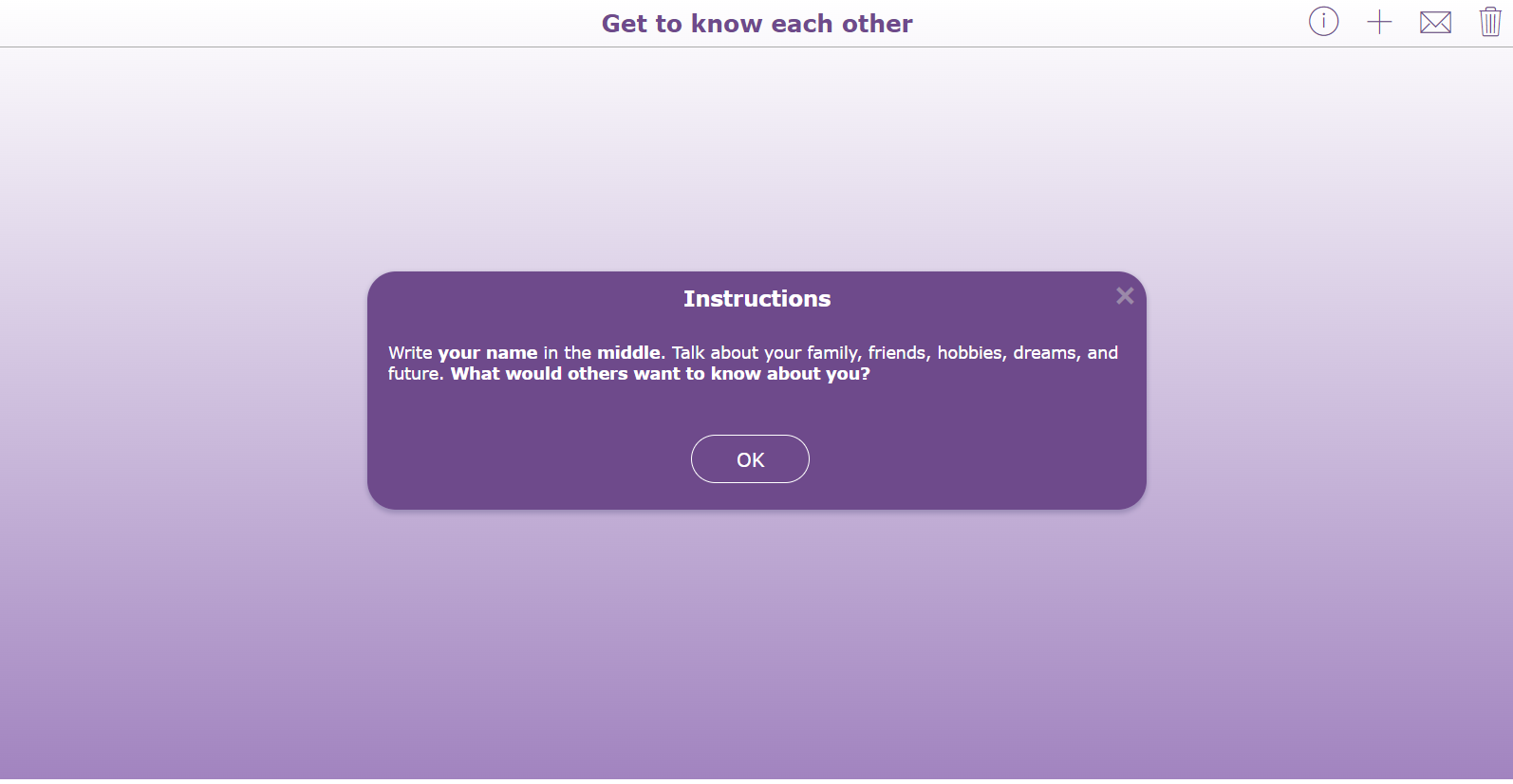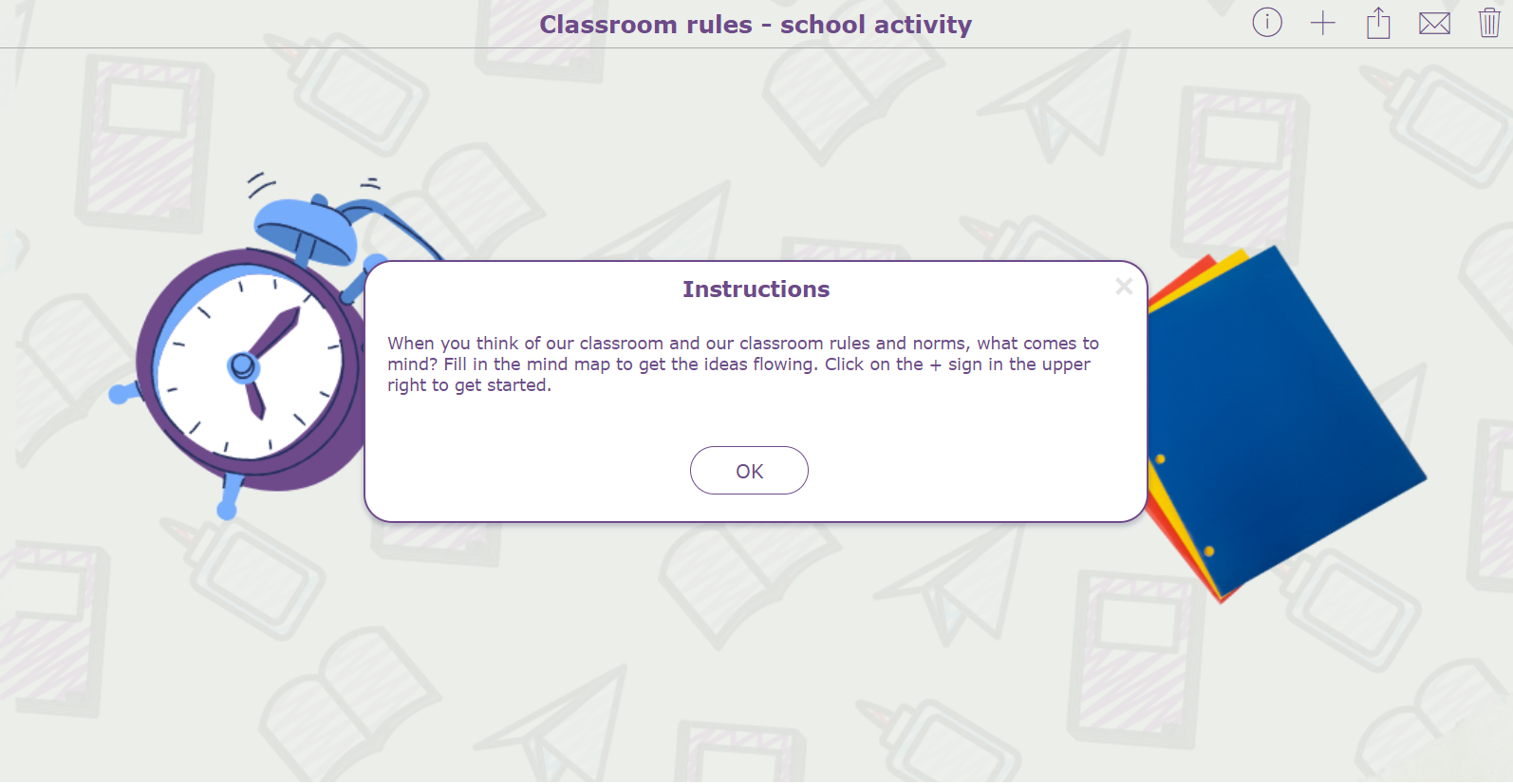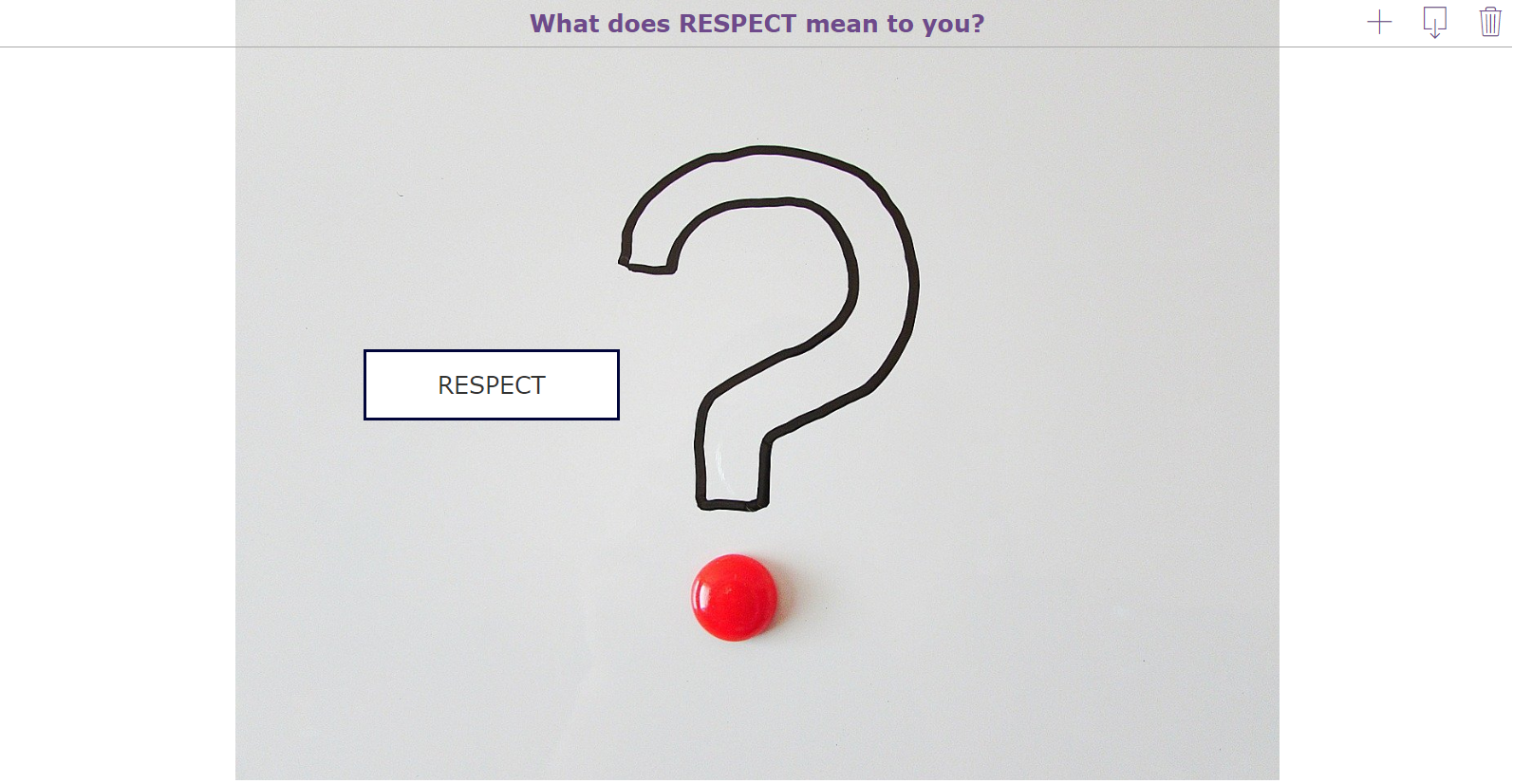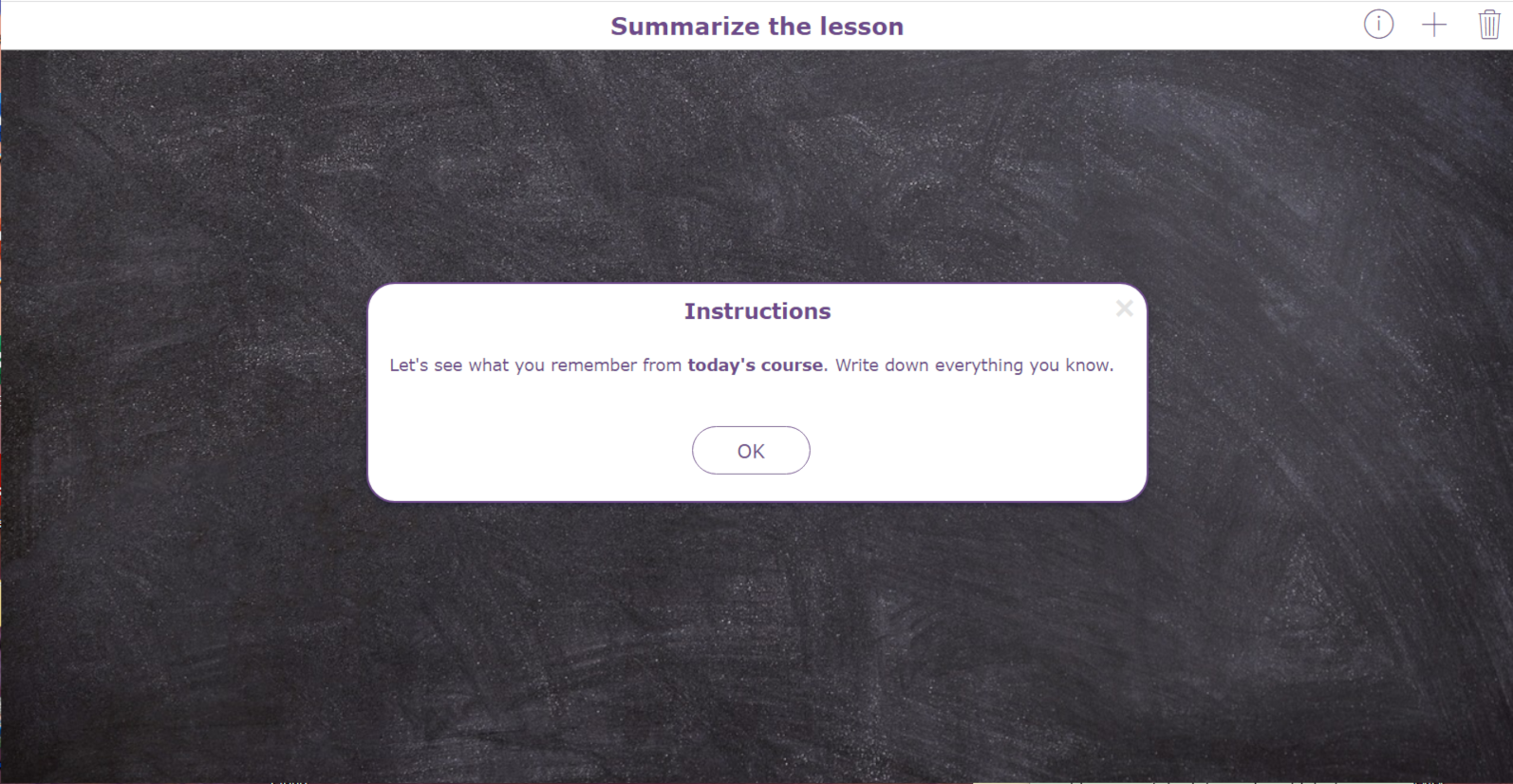20+ Helpful ways to bring more structure to your students' thinking
 Chelsey Both —
Chelsey Both —
Creating structure in your mind is so important. It can help you become more conscious of your thinking, making life less stressful. And apart from factual knowledge and skills, one of the key things students learn in school are processes. Learning how to tackle different types of problems, and figuring out common methods to do so is an important life skill.
BookWidgets created three widget types, or activity templates, to help students bring more structure into their thought processes. I’m talking about the Checklist widget, the Planner widget, and the Mind Map widget.
I will elaborate in the following parts of this post and show you some examples afterward 👇
Let’s get started! 👏
What is structural thinking?
The definition of structured thinking is the process of creating a clear, linear framework to solve problems. Structured thinking is often used in problem-solving. It involves dividing a large problem into several smaller ones so that it is easier to solve. Being a structured thinker is good because that’s how we can solve different kinds of problems.
23 ways to bring more structure to your students’ thinking
As I’ve said before, with BookWidgets, teachers can create digital activities or widgets. There are 40 widgets to choose from and add your content to. The next three, Checklist, Planner, and Mind Map widgets, are perfect for your lessons when you want to give students a solid lesson structure they can build on. It will make your students memorize and learn better. Of course, you don’t necessarily need to use the BookWidgets activities for this. There are more tools you can use as well. I’m just showing you the lesson ideas created with these little helpers. How you implement them is entirely up to you.
Remember, you can use and duplicate all these digital activities from this BookWidgets group. For this, you can create a free account.
Structure thinking with a digital Checklist
 The first widget you can use to bring more structure to your students’ thinking is the Checklist widget. As the name suggests, it is a Checklist maker. Add all the different tasks or steps into your widget. This way, students will see an overview of everything they must do and then tick off each task or step when completed. Get ready for some lesson examples with this digital Checklist! 👇
The first widget you can use to bring more structure to your students’ thinking is the Checklist widget. As the name suggests, it is a Checklist maker. Add all the different tasks or steps into your widget. This way, students will see an overview of everything they must do and then tick off each task or step when completed. Get ready for some lesson examples with this digital Checklist! 👇
1. Essay structure checklist
Essay writing can be a challenge for many students. This widget shows a step-by-step plan on how to write an essay. First, students can preview all the steps needed to write an exemplary essay. Then they can begin with the first step. Once finished, they can check off each step and proceed to the next item.
💡PRO TIP: When you’ve shared the checklist with your students through an LMS, it will automatically remember where your students left off. So when they open the checklist again the next day to continue working, they will see their checked items and the things they still need to complete.
2. Baking vanilla cupcakes checklist
Are you looking for a fun activity to do with your students? Then you must check out this widget on how to bake vanilla cupcakes. Students can easily see the process. They can work independently while you are watching them. Following instructions step-by-step is an essential skill to have. This checklist will guide your students through all the steps to successfully complete something. Later, when your students search the internet for a solution to a problem they have, step-by-step checklists will be given so students can solve the problem themselves.
3. What to put in your pencil case checklist
Do you have students who forget their school supplies, or do you have that one student who always overpacks? Use this widget to help them ensure they have all the tools for success in class daily. First, let them check if they have everything on the list. If they have things that don’t belong in their pencil case, they should leave them at home next time. You can do the same for their school bags.
4. Craft plan checklist
Is it time for some crafting? In this checklist, students get directions on how to make an origami elephant. Your students just need to follow each step and check them off when complete to create their elephant. Students can work independently, in groups, or together directed by you.
💡PRO TIP: add a background image of the result so students know their goal.
5. Science experiment checklist
Almost every student knows how to make slime, but almost no one knows information about the scientific components of this sticky solution. So why not use this fun experiment during your class to explain more about fluids and viscosity? Here’s a checklist for you already; you only need to start this science experiment together with your students. 😉
💡PRO TIP: For experiments that can get messy, you don’t want your students to check the boxes in the checklist with their filthy hands. As a teacher, you can always print your checklist, so students just have to check the boxes with a marker or pen.
6. Fieldtrip checklist
Everyone loves a field trip 🚌, but planning a field trip can be stressful. With our checklist maker, you can list all the necessities. This way, your students know what they need, and they don’t need to stress about forgetting something. Once they’ve put an item in their bag, they can check it off. ✅
7. Password checklist
We all know how important it is to be safe on the web. But do we also know how to create a strong password? Go through this checklist with your students. Then, you can ask if they can check off every box indicating the password is strong. And just like that, a structured dialogue about passwords and computer security has been started.
Structure thinking with a Planner activity
 A planner is a document or tool that makes it easier for people to manage their plans. Using this digital planner activity, students can reorder tasks, remove tasks, choose new tasks from a fixed set and even come up with their own tasks. Using a planner online has never been easier. For each task, you can add an icon on the left and a colored bar on the right for the tasks. It can be used to give a sense of grouping or additional meaning. Check out this webinar to learn how you create a planner as in the examples below.
A planner is a document or tool that makes it easier for people to manage their plans. Using this digital planner activity, students can reorder tasks, remove tasks, choose new tasks from a fixed set and even come up with their own tasks. Using a planner online has never been easier. For each task, you can add an icon on the left and a colored bar on the right for the tasks. It can be used to give a sense of grouping or additional meaning. Check out this webinar to learn how you create a planner as in the examples below.
8. School morning routine planner
Let your students plan their perfect school morning routine, and maybe they can try it out the next day. This way, students will learn how to prepare as they will discover that some tasks need more time than others. For students with special needs, having a routine like this might help them a lot! You can also use this personal plan to talk about the morning routines of different students.
💡PRO TIP: Start with an empty planner and let students choose from the tasks in the + menu. This makes the planners even more personal to your students, and they have to structure their own thinking instead of you doing it for them.
9. Schoolday planner
At the start of the school day, it is always lovely when students know what will be expected of them. It’s beneficial for students who need more structure. The example I’ve made is for kindergarten but can be adapted for any age learner. When you open the widget, you can see that I used colors 🌈. Colors provide structure and an overview to your students of what happens in the morning and in the afternoon. In kindergarten, it’s always a good idea to project the planner on the big screen throughout the day. Your toddlers know what to expect and understand what they have done already. You, the teacher, will check off the tasks simultaneously.
💡PRO TIP: Attach colors and known icons you always use in your classroom for specific tasks.
10. Choice board planner
Let students choose what kind of activities they want to do. This will engage and motivate them much more. It’s called: differentiating students’ interests. In this planner, you can “freeze” tasks your students really have to solve. For the other tasks, your students can choose themselves.
💡PRO TIP: Use the instructions field to give clear guidelines and rules to students for their choice board.
11. Study planner - Spaced practicing
When your students have to study for their finals or a big exam, there are a lot of lesson materials and topics to study. Even if it’s just for one course. Let your students plan the topics so they can schedule everything and space their practice. This is called spaced practice, an excellent learning technique for students to remember better.
💡PRO TIP: In this planner, students can add other study materials to the topics you’ve put in for your course. They can do this by using the + menu, so they can study more and make their own schedule.
12. Reading comprehension planner
When your students have to read a book, spice up your book report assignments with this reading comprehension planner. Give clear instructions and let your students choose the assignments that interest them. Then, once your students have chosen their activities, they can tick them off in their planners after finishing.
💡PRO TIP: Behind every task, you can put an interactive assignment or another widget from BookWidgets. This keeps everything digital and in one place. Students can always go back to their planner from the exercise within the planner. Students get a “Go back” button if you configure the “Go back label” in the planner widget.
13. Personalized learning plan
Everyone learns at their own pace; it’s no different for students. Create other planners so each student has a personalized planner based on their individual learning needs. This is a great way to differentiate instruction. In this example, you can find a customized learning plan for math. We added links to other widgets to make it easier for students to find the exercises. Of course, you don’t really have to state which level the student is on. I added that, so you can clearly see what makes this a personalized learning plan.
💡PRO TIP: It’s straightforward to duplicate your planner within BookWidgets and make changes to its tasks.
14. Awareness days planner
Educate your students about days that deserve extra attention, for example, World Oceans Day. Instead of giving a boring presentation, you can use the Planner widget. You can combine providing information with keeping your students active. And again, we used links to other widgets in this example. Make sure to open this widget to find out what we created for World Oceans Day.
💡PRO TIP: Freeze everything on your planner and make sure your students can’t use the + menu to add their own tasks or tasks to the list. If you do this, you create a complete lesson that is very structured as well. Then, students go through the lesson, step-by-step and check the different parts in your lesson when they are done.
15. Digital bucket list - Holiday planner
Students are always looking forward to a break, but when the time comes, they get bored. This digital bucket list will help your students plan how they will spend their free time. Let each choose 5 different activities in our set task list by clicking on the “+” icon in the upper right corner. Ask your students to take pictures when they are doing an activity, so you can see evidence of their learning. Giving your students a planner like this has a few advantages:
- You inspire your students with activities they otherwise would not have done.
- You help busy parents figure out fun things to do with their kids.
- You choose assignments that are valuable and teach your students a lesson or new skills (without them knowing it 😄)
💡PRO TIP: Use a text question type in a quiz widget and put it behind an instructions task in your planner. This way, you can give more comprehensive instructions and add audio!
Structure thinking with a Mind Map
 The last option to structure your students’ thinking is a Mind Map widget, which organizes information visually. Students can learn to take notes, brainstorm, and solve problems. There are many design options, such as color, shape, and connections, so students can organize their thoughts around a topic. The best thing: it’s super easy for students to use and takes the teacher about 1 minute to create. Let me show you some mind map examples. 👇
The last option to structure your students’ thinking is a Mind Map widget, which organizes information visually. Students can learn to take notes, brainstorm, and solve problems. There are many design options, such as color, shape, and connections, so students can organize their thoughts around a topic. The best thing: it’s super easy for students to use and takes the teacher about 1 minute to create. Let me show you some mind map examples. 👇
16. My hobbies mind map
Having a little icebreaker on the first day of school can be nice. Every student has a hobby; it doesn’t need to be a sport. They can talk about any activity they love to do in their free time. They can add information in the Mind Map widget and explain why they love doing that activity. Ask them to find someone who has their activity in common with them, and who knows, they will become friends.
I created a small example for this idea. You can see it in the image below.
💡PRO TIP: If you want your students to save their mind map, enable the “Download” option. When your students are done, they can download their finished brainstorming mind map and keep it for a later one.
17. Word association mind map
Instead of teaching your students about a topic, let them show you what they already know. A simple way of doing this is creating a word association exercise with the Mind Map widget. Give them a word and let them write down everything they associate with this word. For example, in the mind map activity below, I made a word association for the word winter ❄️. When you share this activity with your students, they will start with a blank mind map.
💡PRO TIP: There are two ways for students to add balloons to the mind map. They can click on the + icon in the upper right corner or double-click somewhere in the mindmap.
18. Brainstorm mind map
Time for another presentation? Give your students a topic to research. They can add the most essential parts of the research into this Mind Map widget. It’s possible to divide the main idea into smaller pieces and discuss them further. Later on, it’s easier for your students to create a presentation because they have already added the outline to their mind map.
💡PRO TIP: In this activity, students choose their own topic to start the mindmap. You can leave it blank, so students can fill it out themselves. You can also add instructions, like I did here, so it’s clear what they should do for students.
19. Book review mind map
Memorizing story elements until you begin writing a book report is challenging. The idea of this digital mind map example is that students will be able to jot down the essential plot elements here. This might include characterization, rising action, climax, or even an opinion about an event in the story. Then, once they finish the book, all they have to do is take a look at the mind map, and they will remember the most essential elements again.
💡PRO TIP: Add clear instructions, so students know what to do. If your mind map doesn’t have the known mind map structure, it might be a good idea to add an example image of the exercise, so your students will understand it better.
20. Introduction game mind map
Use this digital mind map exercise as an introduction on the first day of school. Add as many topics as you want, and let the students start by writing keywords down with information about themself. It’s even possible for them to personalize it a little bit with their favorite colors. Then, when everyone is ready, they can present their mind map.
💡PRO TIP: When you share a Mind Map widget through an LMS, you can follow student progress in the activity in real-time. Keep an eye on your students to see how they proceed in the activity and to see students who need some help or inspiration.
21. Classroom rules mind map
Every classroom has rules and norms, but what do your students think of them? Let them write down what they like, what can be better, and what is not good. Encourage them to write new ideas, no matter how crazy. When done, your students can submit the results, and you, the teacher, can get to work. Next, create a definite classroom rules mind map based on the mind maps your students submitted. When done, print your mind map and hang it in your classroom. It’s now a great reminder of the structured classroom rules for everyone.
💡PRO TIP: In the Mind Map widget, you can enable the “submit” option so that students can submit their answers to the teacher, and you can gather all their work and even give feedback!
22. Start the conversation
As a teacher, it is essential to be able to create a safe classroom environment where students are encouraged to have conversations. For example, if you notice someone being bullied, you can use this mind map idea to have a class discussion with your students about bullying or having respect. Then, one by one, have them say or let them write what the topic means to them. An additional step is creating some rules together about the topic. For example, if your topic is respect, you can ask them how they are going to make other people feel respected by them.
💡PRO TIP: Instead of sharing a mind map with your students, 1 to 1, you can project the mind map in your interactive classroom board. Let students come to the front of the class to add a new connection and words to the mind map.
23. Summarize the lesson
Sometimes students need to have a little summary moment at the end of their class. This synthesis may prompt them to think about their learning, which will help them remember their classwork longer. Use the mind map with today’s lesson topic as the subject and let them add everything they still remember about the lesson.
💡 PRO TIP: Show your version of the mind map when everyone is done so they know what they should have written down and what is important to remember.
Wrap up
That’s it! After seeing all these widget ideas, I’m sure you have some ideas as well. 💯 If you want to use some or all these ready-to-use lesson activities, make sure to duplicate them into your own BookWidgets account for free. You can find them all in this BookWidgets group folder. After duplicating, you can even change them (language, design, instructions, …)
If you want to get started from scratch right away and create your own checklist, planner or mind map, click on the button below and get started!
Are you going to use one of these ideas, or do you have a new idea? Let us know on Twitter! Help us inspire many more teachers by sharing your ideas about these widgets in our Facebook community.
